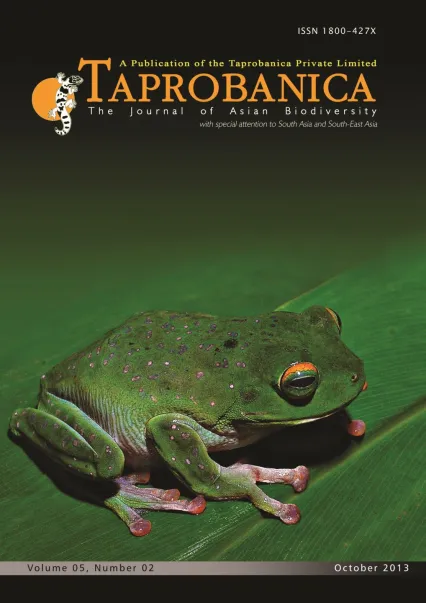

v5i2.116
Volume 5 | Number 2 | November 2013
Short Note
ISSN: 1800-427X (print)
eISSN: 1800-427X (online)
DOI:10.47605/tapro.v5i2.116
Submitted date: 31 November 2012
Accepted date: 12 October 2013
Published date: 25 December 2013
Pp. 152–153.
Egg-predation of Hemidactylus frenatus
T.G.T. Kusuminda, D.A.A.D. Athukorala & D.M.S.S. Karunarathna*
*Corresponding author. E-mail: dmsameera@gmail.com
Hemidactylus frenatus Duméril & Bibron, 1836 usually occur in pairs, is commonly found in human settlements and is thus known as a ‘house gecko’. It only rarely inhabits undisturbed forests in the wet zone though it is comparatively common in dry, intermediate and semi-arid forests in Sri Lanka. This nocturnal species spends daytime in crevices but feeding during daytime has been observed. Although it is not highly territorial, most individuals seem to occupy the same place for an extended period. Group behavior can also be observed, especially within human habitations in the dry zone. This species can commonly be seen on lampposts where it waits for insect prey to be attracted to the light. In addition to the expected assortment of insect prey it also commonly feeds on rice, bread and other household food and hence has become a ‘pest’ in most houses. Habitual cannibalism is shown by some adults as they feed on juveniles. Eggs as a part of a gecko’s diet, whether of their own species or those of another species, are recorded in captivity. In this paper we describe the egg-feeding behavior of H. frenatus in the wild.
Section Editor: John Rudge
eISSN: 1800-427X (online)
DOI:10.47605/tapro.v5i2.116
Submitted date: 31 November 2012
Accepted date: 12 October 2013
Published date: 25 December 2013
Pp. 152–153.
Egg-predation of Hemidactylus frenatus
T.G.T. Kusuminda, D.A.A.D. Athukorala & D.M.S.S. Karunarathna*
*Corresponding author. E-mail: dmsameera@gmail.com
Hemidactylus frenatus Duméril & Bibron, 1836 usually occur in pairs, is commonly found in human settlements and is thus known as a ‘house gecko’. It only rarely inhabits undisturbed forests in the wet zone though it is comparatively common in dry, intermediate and semi-arid forests in Sri Lanka. This nocturnal species spends daytime in crevices but feeding during daytime has been observed. Although it is not highly territorial, most individuals seem to occupy the same place for an extended period. Group behavior can also be observed, especially within human habitations in the dry zone. This species can commonly be seen on lampposts where it waits for insect prey to be attracted to the light. In addition to the expected assortment of insect prey it also commonly feeds on rice, bread and other household food and hence has become a ‘pest’ in most houses. Habitual cannibalism is shown by some adults as they feed on juveniles. Eggs as a part of a gecko’s diet, whether of their own species or those of another species, are recorded in captivity. In this paper we describe the egg-feeding behavior of H. frenatus in the wild.
Section Editor: John Rudge
- List of Articles & Contents





